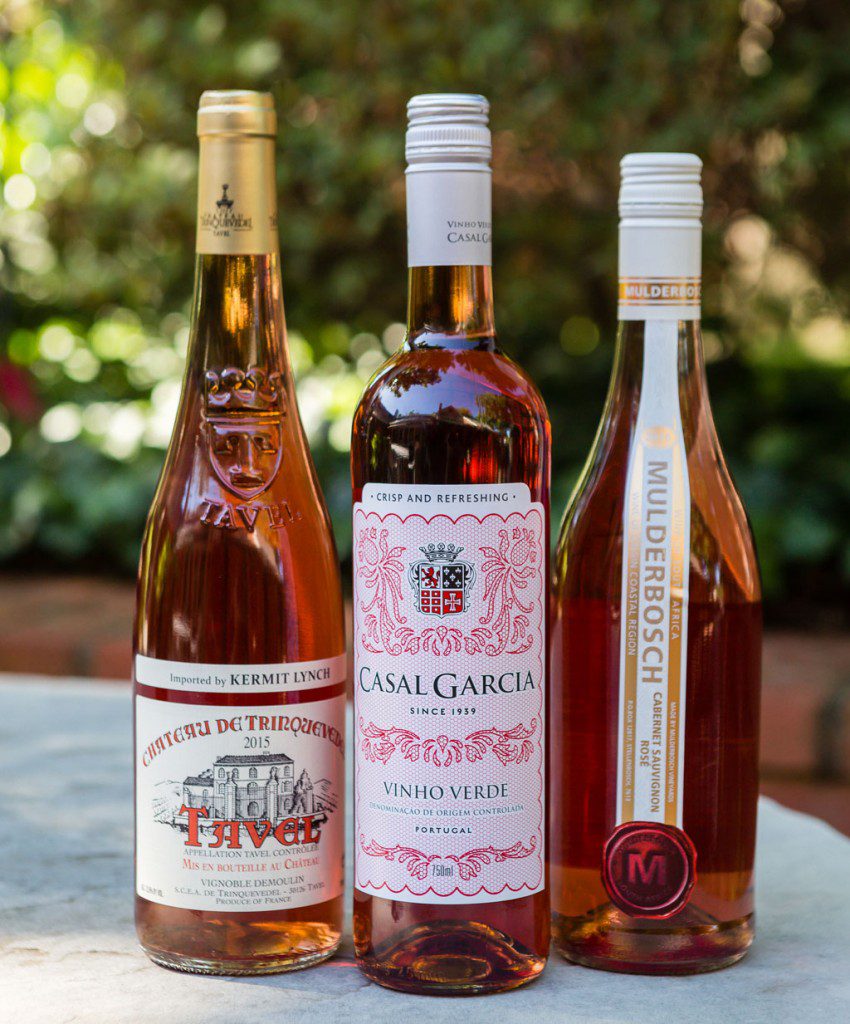
[dropcap]This[/dropcap] year marked another year I didn’t make it to the Kentucky Derby, but when I finally make it, you can place a winning bet that I’ll savor a cool glass of crisp, dry rosé and skip the mint julep. To me, the chill of this wine, its striking salmon color, subtle fragrances and flavors of fresh strawberries and cherries always put me in a great state of mind. Be certain, I’ll be the truly chic one there (hat and rosé) because dry rosés are crushing the world right now with their popularity and sheer deliciousness.
Kentucky Derby or not, dry rosé is to be enjoyed anywhere, anytime. That’s the beauty of it. Rosé in my mind is a red wine dressed in bloomers or a white wine sporting a tan and pumped with steroids. It is perfect to sip in hot weather or at picnics, to be drunk by itself or with food – being a lovely accompaniment to a multitude of appetizers and other courses and – holding its own all year long – enjoyable even in cold winter months. It’s a cross-dresser of sorts in the wine world since it technically finds itself halfway between a red and a white wine.
I love the diversity and excitement of drinking something other than Chards and Cabs – rosé to the rescue! Once upon a sip, rosé was nothing more than a quaffable, white zin “blush,” but it has bulldozed its way back into the winning circle of the wine world with its dry style and will never look back.
Let’s look at a few shades of rosé or, simply put, styles of rosé. Very popular, especially in France, is the maceration method, where red grapes sit in their juice after the crushing of the grapes and leach some color out – usually in less than 48 hours. Another is a blending method popular in the Champagne region of France but somewhat uncommon elsewhere. Here, a small amount of red wine is added to an already finished white wine.
Additionally, we have the method of Saignée (pronounced san-yeah), which means to bleed; it’s popular in California (Napa and Sonoma come to mind), and the technique for this occurs when red wine, in its first stages of being made, has some of the juice bled or drained out of its vat into a new vat to continue in production as a white wine with color. This has the added benefit of concentrating the original red wine since some of the juice has been pulled out. Finally, one often sees sparkling rosés from areas that make sparkling wine or Champagne by incorporating the grapes of Pinot Noir, Chardonnay and others.
The most popular grapes for rosé include: Sangiovese from Italy; Tempranillo from Spain (Rioja is popular); Pinot Noir; Cabernet Sauvignon; Tavel from Cotes du Rhone, France; Provence, France rosé from Grenache; Cinsault; Syrah; Mourvèdre (40 percent of this appellation’s production is rosé); Mourvèdre rosé from Bandol, France; and Zinfandel to name a few. Portugal makes some lovely rosé that has a slight sparkle to it and is inexpensive.
Whenever you find yourself in a state of thirst, and that seems to be often, run for the rosés. It will change your palate forever and you’ll come up smelling like a rosé.
Recommended Sips
Chateau de Trinquevedel Rosé, Tavel, France $20.99
Sporting a pale, ruby, pink color, this rosé bursts with bright and ripe strawberry, cherry and cranberry flavors. A hint of rose petals and minerality creep into the finish of this delicious wine. Sip this and you sip the southern Rhone valley. Pair it with salmon or just savor on your patio.
Casal Garcia Rosé, Vinho Verde, Portugal $9.49
For under $10, this is one of my favorite summer wines. It is super dry and has the added bonus of having an ever-so-slight spritz. The alcohol is only 10 percent, so I love to say, “One bottle equals one glass of something else.” Sip away while enjoying a summer’s eve.
Mulderbosch Rosé, South Africa $15.99
Completing our international tour of Rosés, this South African beauty is explosive on the palate with juicy raspberry, cherry and strawberry notes and hits every high note in your mouth. Sneak this one into the movie theater for a liquid picnic under the big screen (screw cap, too).























